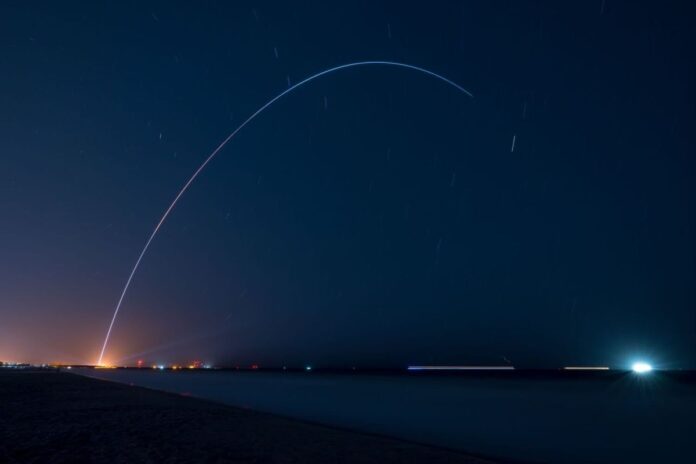The first-ever 3D-printed rocket is being retired after a single flight.
That vehicle, Relativity Space’s Terran 1, launched on its debut test flight on March 22. The rocket performed well initially, surviving Max-Q, the part of flight during which the structural loads are highest on a vehicle. But something went wrong shortly after the Terran 1’s two stages separated, and the rocket failed to reach orbit.
On Wednesday (April 12), Relativity Space revealed the preliminary findings (opens in new tab) of its ongoing anomaly investigation. It appears that the main valves of the upper stage’s Aeon engine opened more slowly than expected, company representatives said. In addition, the engine’s oxygen pump didn’t generate pressure as planned, perhaps because of a “vapor bubble” at the pump inlet. Despite those issues, the rocket reached a maximum altitude of 83.2 miles (134 kilometers), well above the Kármán line at 62 miles (100 km), the widely acknowledged boundary where outer space begins.
But these findings took a back seat to bigger news that Relativity Space released on Wednesday: The company is moving on from the Terran 1 to focus on the bigger, more powerful Terran R, as CNBC (opens in new tab) and Ars Technica (opens in new tab) reported.
Video: Relativity Space CEO Tim Ellis on 3D-printed rockets and the future
This isn’t exactly a shocker; Relativity Space has long stressed that the Terran 1 is a pathfinder for the Terran R, which the company views as its future workhorse. But we didn’t know that Terran 1’s time would be so short — that it would get just a single chance to strut its stuff.
We also learned Wednesday that Relativity Space has modified the design of the Terran R considerably (opens in new tab), making it bigger and more powerful.
The previous iteration was envisioned to stand 216 feet (66 meters) tall and be capable of lofting up to 22 tons (20 metric tons) to low Earth orbit (LEO), thanks in large part to its seven Aeon first-stage engines.
The new Terran R, however, will tower 270 feet (82 m) above the ground feature 13 Aeons in its first stage. It will be able to deliver up to 26 tons (23.5 metric tons) to LEO in reusable mode, or a whopping 37 tons (33.5 metric tons) in expendable configuration. For comparison: SpaceX’s Falcon 9 rocket, which features a reusable first stage, can haul 25.1 tons (22.8 metric tons) to LEO.
That expendable variant is also a new development; the Terran R had previously been billed as a completely reusable rocket. The plan is now to go with an expendable upper stage, at least for the time being, atop an expendable or reusable first stage.
“I’m calling it a prioritization of first-stage reuse, just because the economic benefit is so much greater,” Relativity Space co-founder and CEO Tim Ellis told Ars Technica’s Eric Berger (opens in new tab). “And since we need to get into market, and get to a higher ramp rate as quickly as possible, it just made sense to focus company resources on that. It’s a much more pragmatic initial solution.”
Relativity Space had been aiming to launch Terran R for the first time in 2024. But the company is now targeting 2026 for the debut liftoff, Berger reported. That means we’ll have to wait three more years for another Relativity Space launch.
The Terran 1 that flew last month was about 85% 3D-printed by mass. Relativity Space had said it planned to get that number up to 95% for the Terran R, but that’s no longer the case, at least not for the earliest iterations of the rocket.
“Ellis said the Terran R will still be a ‘3D printed rocket,’ but initial versions (at least) will use aluminum alloy straight-section barrels,” Berger wrote. “This is necessary, he said, to serve ‘overwhelming market demand’ for a vehicle of this size.”
And that size is considerable. As Berger noted, Terran R’s thrust at liftoff will be comparable to that of Blue Origin’s New Glenn and United Launch Alliance’s Vulcan Centaur, two heavy lifters that are also gearing up for their debut missions. Relativity Space is aiming big indeed.
Mike Wall is the author of “Out There (opens in new tab)” (Grand Central Publishing, 2018; illustrated by Karl Tate), a book about the search for alien life. Follow him on Twitter @michaeldwall (opens in new tab). Follow us on Twitter @Spacedotcom (opens in new tab) or Facebook (opens in new tab).

